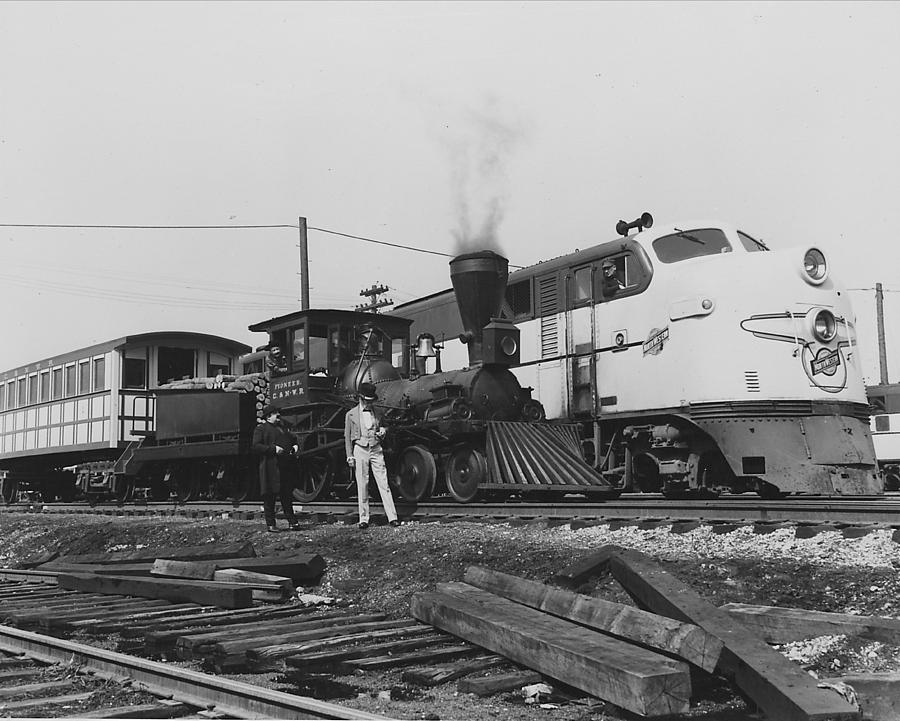Chicago is considered the most important rail hub in North America. For a long time, the city served as a leading transshipment point for freight between the country’s major railways, as reported by chicago-future.com.
Freight Transportation and Passenger Rail Service

The first railroad in Chicago, Galena & Chicago Union, was founded in 1836 with the goal of building tracks to the lead mines in Galena. In 1848, the first tracks were laid, though they led not to Galena, but to Oak Ridge (now Oak Park). The terminal station was located near Canal Street and Kinzie Street.
Soon, lines connecting Chicago with the wheat fields of northern Illinois and southern Wisconsin were constructed. At that time, railroads were critical for transporting grain and livestock, which helped Chicago become a leader in the grain trade and the meatpacking industry.
Recognizing the city’s centralized location, many railroad companies opened headquarters and sorting stations in Chicago. The city soon became a hub for the production of freight and passenger cars, and later, locomotives.
Freight moving across the country passed through the city’s rail stations, where it was classified and transferred to massive sorting stations located on the outskirts of Chicago.
Innovations in Production

Starting in the 1860s, Chicago became home to numerous manufacturers of railroad tracks and cars. Throughout its history, many local residents worked in the railway industry, which became one of the largest sectors in the region. Even with the rise of cars and airplanes, the railroad business remained a significant part of Chicago’s economy.
Manufacturing and repairing railroad equipment became a leading industry. By the 1850s, Chicago was home to several major railroad car manufacturers, including “Eagle Works” and “American Car Company,” each employing around 300 people. At the same time, railroad companies began operating large production facilities and repair shops. The role of steel mills was also essential, as they started producing rails in the late 1850s.
By the end of the 19th century, the production of railway equipment had become one of Chicago’s leading industries. The “Pullman-Standard Car Manufacturing Company,” led by George Pullman, became a global leader in railcar manufacturing. Pullman, who experimented with sleeper cars in the 1850s and 1860s, had a fleet of several dozen sleeper cars operating on U.S. railroads by 1867. Though Pullman registered his business in Illinois, production initially took place in New York. This changed when he built a factory near Chicago.
By the early 1890s, Pullman’s factory was producing 12,500 freight cars and 1,800 passenger cars annually. By the 1920s, “Pullman-Standard” was the leading American manufacturer of railcars, producing around 100,000 freight cars and hundreds of passenger cars annually. It’s important to note that Pullman’s enterprise was not the only major car manufacturer in the Chicago area. By the late 19th century, dozens of firms were operating in the region. In the 1890s, the advent of the all-steel freight car saw several Chicago companies take the lead in that industry.
Decline and Rebirth
By the 1960s, six major railroad terminals served passenger trains in Chicago’s Loop. Travelers between the East and West coasts often spent half a day in Chicago waiting for connecting trains. The rise of airlines, however, led to a decline in intercity rail travel, and by 1971, most remaining passenger services were consolidated under “Amtrak.”
The railroad industry in Chicago saw a downturn in the 20th century, largely due to the development of interstate highways and commercial aviation. However, railroads eventually reclaimed their importance, thanks to technological innovations.
Today, Chicago’s rail operators focus on efficiency and are implementing various technologies, from advanced signaling systems to cutting-edge logistics software. These efforts ensure that the railroads continue to modernize and meet the demands of contemporary commerce and transit.
Interesting Facts about Regional Rail

- Illinois has over 7,300 miles of railroad tracks, making its rail system the second-largest in the nation.
- More than 500 million tons of freight are transported annually on Illinois railroads.
- Chicago is the largest rail hub in the U.S. and the third-largest intermodal container port in the world, behind only Singapore and Hong Kong.
- Over 60 railroad companies operate in and through Illinois, the highest number in the country.
- Annually, Illinois railroads transport about 35 million tons of chemicals, many of which are hazardous.
The rail industry in Chicago and Illinois continues to grow and develop. Expansion and improvement plans, designed by local authorities, aim to preserve the city’s rich railway heritage.


